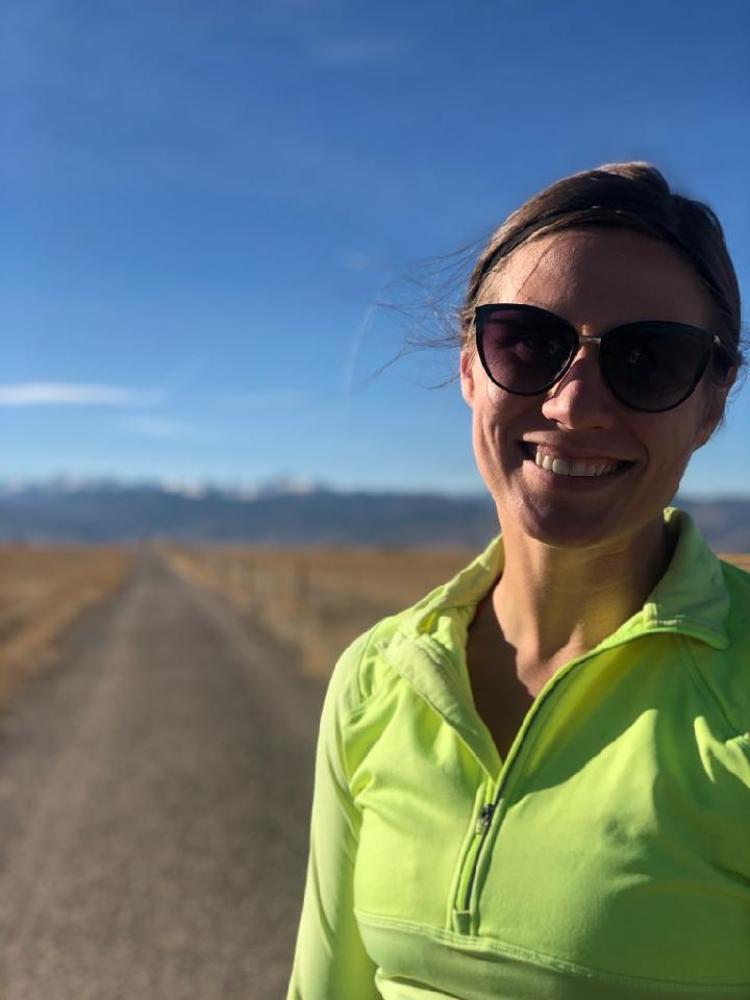Nationwide search finds no evidence of ‘Ferguson effect’
CU Boulder researcher finds Black Lives Matter protests are not associated with upticks in crime but are linked with fewer police killings of Black people
In 2018, Evelyn Skoy was pondering research questions for her economics dissertation at the University of Colorado Boulder, when she realized that the Black Lives Matter movement had been understudied in her field.
Black Lives Matter began as a hashtag in 2013 and has since grown into a decentralized, global social movement raising awareness and protesting incidents of police brutality and racially motivated violence against Black people.
After “scraping some data from Google trends,” Skoy was intrigued enough to begin searching for other data sources about the impacts of Black Lives Matter.

Evelyn Skoy
“I was curious to know if increased protests or the protest movement was accomplishing what it set out to accomplish, which was reducing fatal interactions with police,” says Skoy, who completed her PhD in 2020.
She was particularly interested in exploring if there were any validity to the supposed “Ferguson effect,” the argument by some Black Lives Matter critics that protests lead to increased scrutiny on police, which would make them less likely to engage in “proactive” policing and yield a consequent increase in crime rates.
While several researchers had examined that question at a local level, Skoy says she was “interested in looking at the question a bit more holistically, across the whole country.”
Skoy’s pursuit of the question has paid off. In October, just months after a summer of protest spurred by the death of George Floyd at the hands of Minneapolis police, the journal Contemporary Economic Policy published her paper, “Black Lives Matter Protests, Fatal Police Interactions, and Crime.”
Using national data gleaned from Elephrame.com, which tracks Black Lives Matter protests, and the Federal Bureau of Investigation’s Uniform Crime Reporting database, Skoy found no evidence of a national “Ferguson effect.” An additional protest was associated with a small decrease of fatal interactions between Blacks and police in the following month, representing a 2.7% decrease from the mean Black fatalities in a month.
“I find evidence that increased protests are associated with a decrease in the number of fatal interactions … in the subsequent month, although there does not appear to be a longer-term impact of protests,” she writes in her conclusion.
In addition, she found no evidence that increased Black Lives Matter protests led to any “measurable impact on crime across the country,” and “slight evidence” that they may have decreased the number of arrests for certain crimes. Overall, she found no evidence that that increased Black Lives Matter protest activity “had an impact on property crime, violent crime, officer assaults or officer attacks.”
“Critics of the Black Lives Matter movement feared that increased scrutiny of police could lead to decreased proactive policing. This drop in proactive policing could, in turn, lead to spikes in crime. However, if instead the United States suffered from over-policing before the Black Lives Matter movement, decreased proactive policing would not necessarily lead to increased crime,” she concluded in her first published academic paper.
Skoy is careful to note that her work is “not 100% definitive; I can’t necessarily say it’s causal.”
I’m really excited about the mix of teaching and research responsibilities I’ll have, and the small class sizes."
Even so, her findings stirred considerable interest at a time when researchers were trying to make sense of the summer’s events. The paper was accepted and moved through the publication in a few months, a process that often takes a year or more.
“Although I never would have wanted the events of this summer to have happened, and I had begun this paper years ago, there was a lot more scrutiny of Black Lives Matter right at the point where I was ready to submit my paper,” Skoy says.
Having the paper on her curriculum vitae didn’t hurt when she applied for around 200 jobs in October. She received five offers and in January accepted an appointment as an assistant professor of economics at Hamilton College in New York.
“I had a lot of great offers, both academic and non-academic. I’m really excited about the mix of teaching and research responsibilities I’ll have, and the small class sizes” at Hamilton, she says.
She’s enthusiastic to be teaching the college’s newly redesigned introduction to economics series, which is intended to make a field dominated by male faculty “more appealing to a broader group of students.”
Skoy also hopes to expand her work on Black Lives Matter, incorporating more recent events, as well as continue her research into other areas she explored in her dissertation, including gender disparities in household labor.

